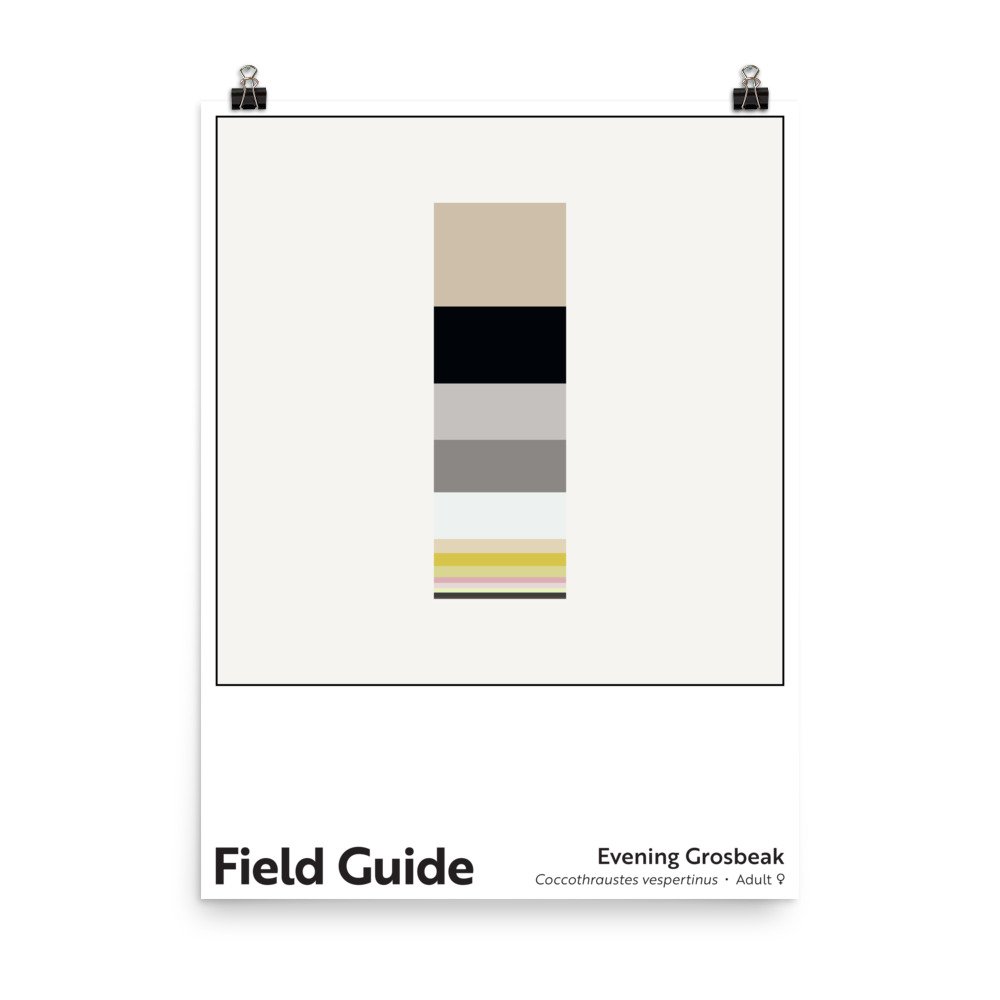Field Guide : Evening Grosbeak (Female)
Field Guide : Evening Grosbeak (Female)
Unlimited edition. 18 x 24 inch, museum-quality poster on matte paper.
While the female evening grosbeak’s plumage lacks the drama of her male counterpart’s, her color column is lovely. Delicate yellows, pinks, and a green-tinged cream foot a column dominated by alabaster, white, black, and greys.
Evening grosbeaks are social birds. Should you see one, it’s likely to be part of a flock, and that flock is probably foraging in the top of a tree or shrub. What they’re feeding on changes with the season. During the summer months, they’re pursuing insect larvae (they’re especially fond of caterpillars), but they dine on aphids, too, and will sometimes sally out from a branch to grab flying insects. Come winter, seeds, berries, and small fruits are on their menu. Once spring takes hold, the birds turn their attention to tree buds. Evidently, they’re as fond of maple syrup as my kids are; they obtain the tasty sap by breaking off small maple twigs and supping on the oozing wound.
Last week, I noted the discouraging evening grosbeak population trends (~92% decline since the 1960s), but there’s a curious addendum. While the species’ population has experienced a dramatic downswing, its range has expanded greatly. Until the mid-19th century, evening grosbeaks were uncommon to rare east of the Rocky Mountains. Today, they are regular visitors to New England and eastern Canada. Ornithologists believe the reasons for this eastward expansion include the planting of ornamental trees in eastern farm and city areas (maples and box elders, in particular), which provided new habitat and winter food opportunities. Some researchers also suggest habitat degradation in the west played a role.
Note: These archival poster prints feature rich, appealing colors. I encourage customers to take care in handling them until they are framed/protected for display; the darker colors on the matte paper can be scratched. They ship rolled, so customers need to flatten them before framing (or have their framer do so).
Charitable Sales Model: Whenever one of these poster prints is purchased, a charitable contribution equal to 10% of the print’s cost (or $3.60) is made to a nonprofit working to tackle environmental or social challenges. Read more about my charitable sales model here.

